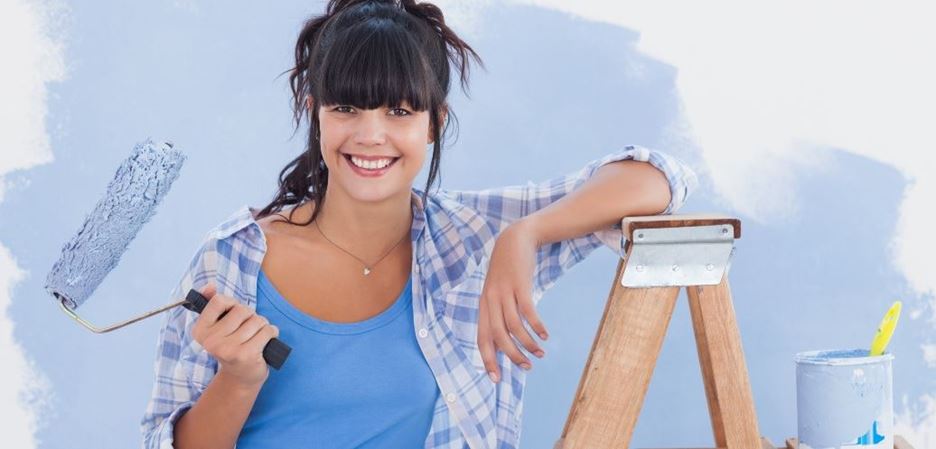
A fresh coat of paint can make a world of difference, giving rooms the splashes of color you’ve always dreamed of, which is especially exciting if you’re getting new furniture. You can save a bundle of money and eliminate the difficulties and expense of dealing with a contractor by painting rooms yourself. Here are some tips to help the job go smoothly:
PREP TIME
Take time to do it right:
- Make sure the walls, trim and baseboards are free of dust, dirt and grease before you begin painting. Use a degreaser or mild dishwashing detergent to clean grease and stuck-on dirt. Then use water to remove any soap residue.
Hint: Get wipes to clean walls and wipe off wet paint later on.
- Apply painter’s tape to protect the trim, window frames, doorframes and carpeting. Use 1.5-inch tape for narrow baseboards and two-inch tape for wider baseboards and floors. Let the tape overhang the baseboard so paint drops are caught. Place strips of tape on the floor or carpet along the baseboard, tucking under with a putty knife.
Hint: To prevent paint from getting through the tape, use a putty knife to press down the tape for a good seal on the surface you’re protecting.
- Remove all switch plates, curtain hardware, wall hooks and grills that cover duct openings.
- Fill cracks and holes in the walls with spackle or joint compound, then sand away any imperfections using a fine-grit sandpaper.
- Don’t forget to lay down drop cloths.
Hint: Vinyl tablecloths actually make great drop cloths. If you put the smooth surface down, it won’t slip around on hard flooring. On carpet, put the smooth side face up.
- Prior to painting, apply lotion to your face and arms to make it easy to wash paint splatter off your skin.
PAINTING
Brush up on painting techniques and learn tricks of the trade:
- If you’re making a drastic color change or if the walls are riddled with holes and numerous spackled areas, start with a primer coat.
Hint: Use a tinted primer similar to the color you selected to help reduce the number of paint coats and create a more vibrant finish.
- Begin by loading the bottom 1.5” of your brush with paint. Tap it against the inside of the can or tray to remove the heavy drips.
- Prevent paint runs by applying the brush a half inch away from the corners and trim, then work your way into those areas. This allows you to unload excess paint first.
- Brush where you can’t roll. Apply paint with a 2” angled brush around trim and in the corners of walls, where your roller can't reach. Extend two to three inches out from windows, doors and moldings.
- Paint one wall at a time for a seamless look. Edge first, then roll, blending as you go.
- Slightly dampen the paint roller by gliding it over the tray and pulling it back over the tray’s grate to evenly distribute paint. Make sure the roller is fully saturated but not dripping.
- Use the “W” technique with the paint roller. Begin in the corner and create a 3-foot “W” pattern then fill it in. Follow this pattern until the wall is coated.
- Roll as close to the edged areas as possible to cover up brush strokes.
- Let the paint dry, then apply a second coat, if needed.
CLEAN UP
Remove tape, dripped paint and keep your painting gear:
- Use a hair dryer to help peel off the painter’s tape at a 90-degree angle. The heat will help the tape release without pulling off paint.
- Use a razor blade to simply scrape paint splatter from windows.
- Use a putty knife to scrape dried paint drips from wood.
Hint: Angle the knife down so it does not dig into the wood. Use a razor knife for corners and hard-to-reach spots.
- Either wrap your paint roller and brushes in aluminum foil to keep them from drying before you paint again or rinse the paintbrush, roller and tray with water.
- Use denatured alcohol to wipe paint residue from wood. Use a stain or stain marker to touch up any light spots.
The best part of this project is the ability to call it your own. After the paint has dried, apply decorative decals, hang artwork and furnish. Enjoy a fresh-looking room for years to come.








